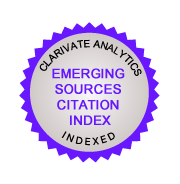Inquiry Practices in Malaysian Secondary Classroom and Model of Inquiry Teaching based on Verbal Interaction
DOI:
https://doi.org/10.32890/mjli2015.12.8Keywords:
Inquiry teaching, wait-time, verbal interaction, macroscopic, submicroscopic, symbolic, multiple levels of representationAbstract
Purpose – Inquiry teaching has been suggested as one of the important approaches in teaching chemistry. This study investigates the inquiry practices among chemistry teachers. Method – A combination of quantitative and qualitative study was applied in this study to provide detailed information about inquiry teaching practices. Questionnaires, semi-structured interviews and field notes were used. 23 chemistry teachers participated in this study. 92 chemistry lessons were audio and video recorded, which subsequently were transcribed in verbatim. By applying descriptive statistics, the frequencies and percentages of each category in the observation instrument were determined. Findings – Most of the questions made by the teachers and students were closed-ended questions. Teachers in this study practised wait-time after asking questions. Meanwhile, it was found that most of the students’ questions were followed by answer given by the teacher and the sequence after students’ answers was followed by explanation from the teacher. Students were merely following teacher’s explanation or procedures in text book before carrying out experiment. The mean of students’ ability to provide further explanation was very low. Significance – A model of inquiry teaching based on verbal interaction was proposed as a guide for chemistry teachers to implement inquiry teaching in order to be in line with the Malaysian National Science Education Standards.Metrics
Metrics Loading ...
Additional Files
Published
29-01-2015
How to Cite
Siew Li, W. S., & Arshad, M. Y. (2015). Inquiry Practices in Malaysian Secondary Classroom and Model of Inquiry Teaching based on Verbal Interaction. Malaysian Journal of Learning and Instruction, 12, 151–175. https://doi.org/10.32890/mjli2015.12.8
Issue
Section
Articles




























